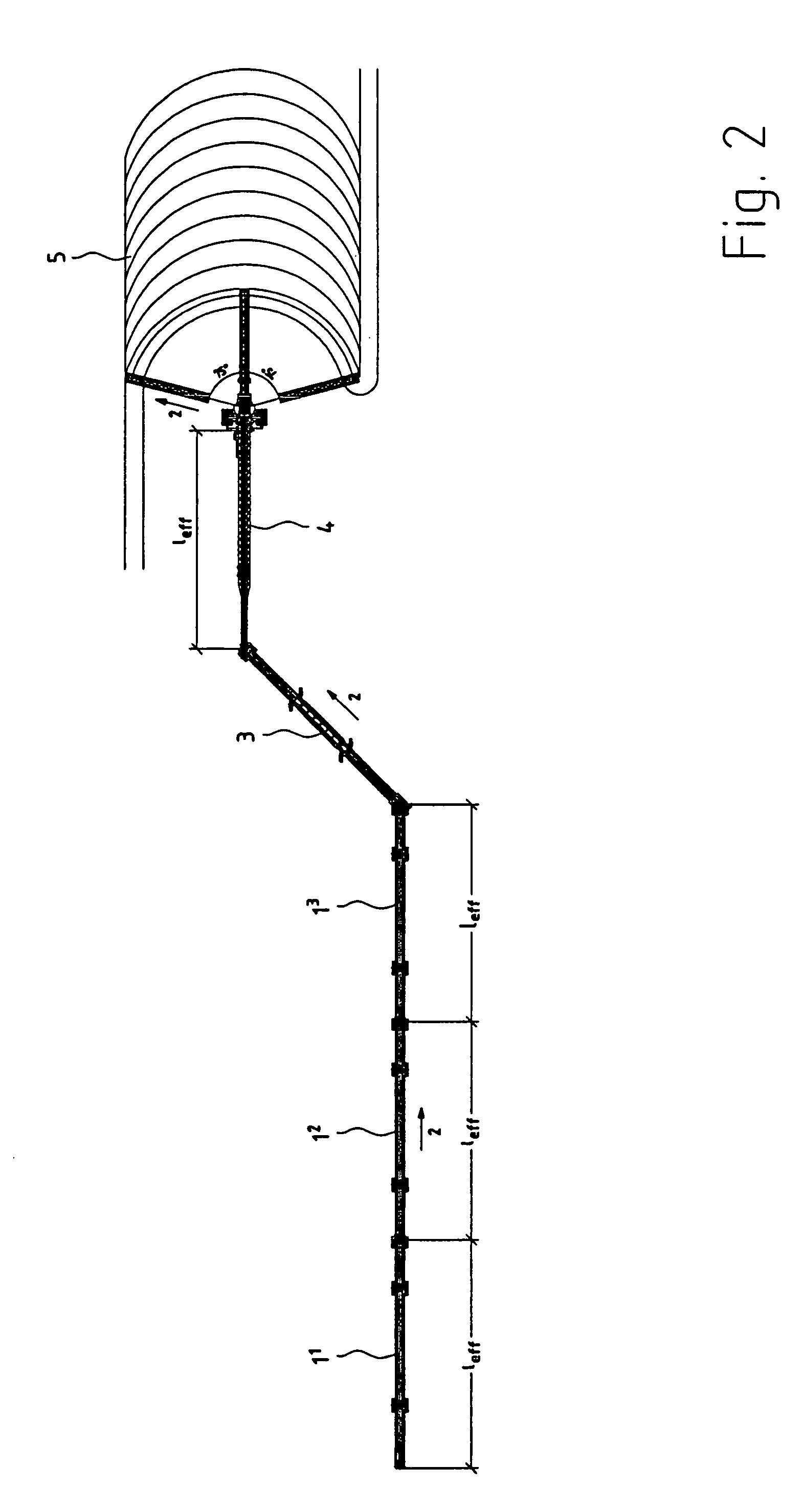Mobile conveying and stacking system for multilayer dumping and process for operating the system
a multi-layer dumping and mobile conveying technology, applied in mechanical conveyors, loading/unloading, conveyors, etc., can solve the problem of low chassis wear, and achieve the effect of system downtim
- Summary
- Abstract
- Description
- Claims
- Application Information
AI Technical Summary
Benefits of technology
Problems solved by technology
Method used
Image
Examples
Embodiment Construction
[0034]Referring to the drawings in particular, FIG. 2 shows a mobile conveying and dumping system, which is provided for piling up ore in layers of a height between 5 m and 10 m. The dimensions of a leach pad may be very large, the length and the width may reach up to a few thousand m. The mobile conveying and dumping system comprises, depending on the length of the leach pad, such a number of standard grasshoppers 1 as is necessary for operating the mobile conveying and stacking system for the multilayer dumping of ore. These standard grasshoppers form a conveying chain. The number of standard grasshoppers 1 was limited to three in the drawing. In fact, a larger number of grasshoppers 11 through 1n is needed to fill up a leach pad. A transfer grasshopper 3 and a special stacker 4 are also arranged downstream of these three standard grasshoppers 11 through 103 used in the direction of conveying 2. The ore is transferred from a conveyor, not shown in the drawing, onto the first stand...
PUM
 Login to View More
Login to View More Abstract
Description
Claims
Application Information
 Login to View More
Login to View More - R&D
- Intellectual Property
- Life Sciences
- Materials
- Tech Scout
- Unparalleled Data Quality
- Higher Quality Content
- 60% Fewer Hallucinations
Browse by: Latest US Patents, China's latest patents, Technical Efficacy Thesaurus, Application Domain, Technology Topic, Popular Technical Reports.
© 2025 PatSnap. All rights reserved.Legal|Privacy policy|Modern Slavery Act Transparency Statement|Sitemap|About US| Contact US: help@patsnap.com



